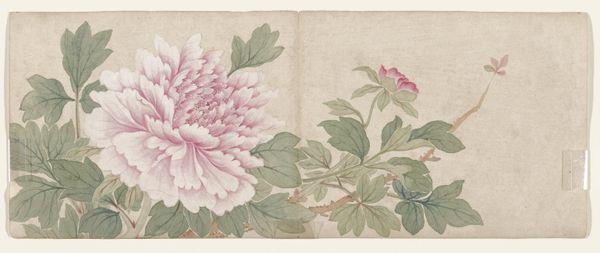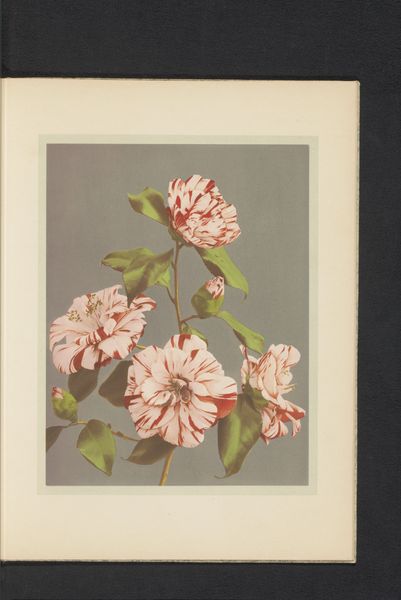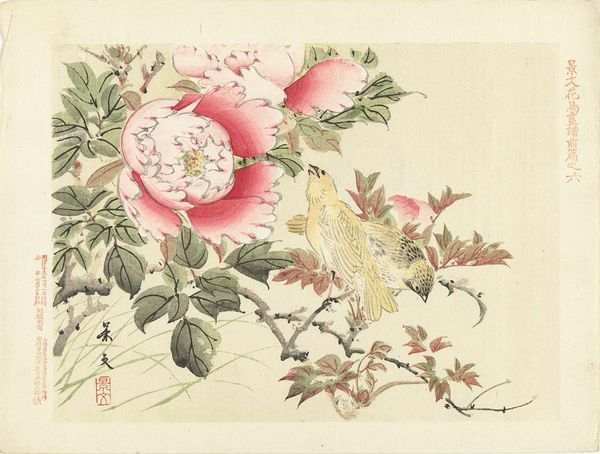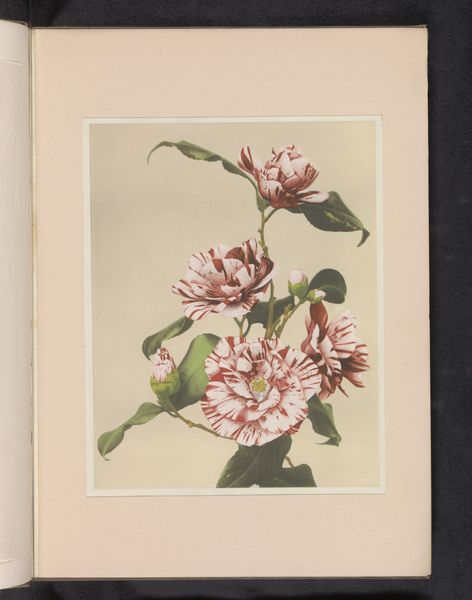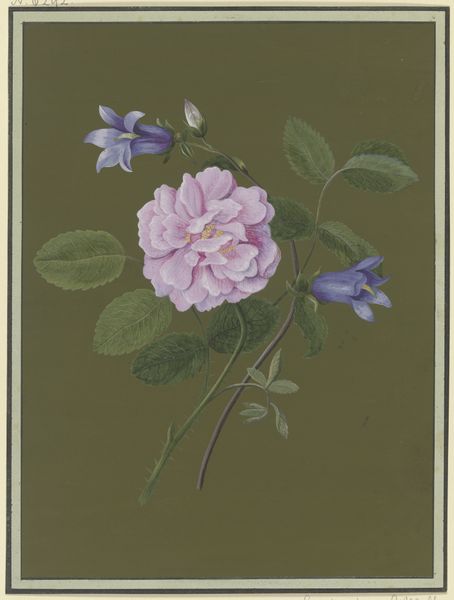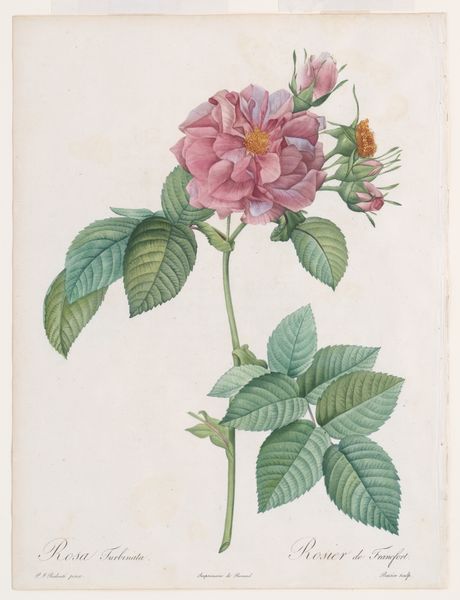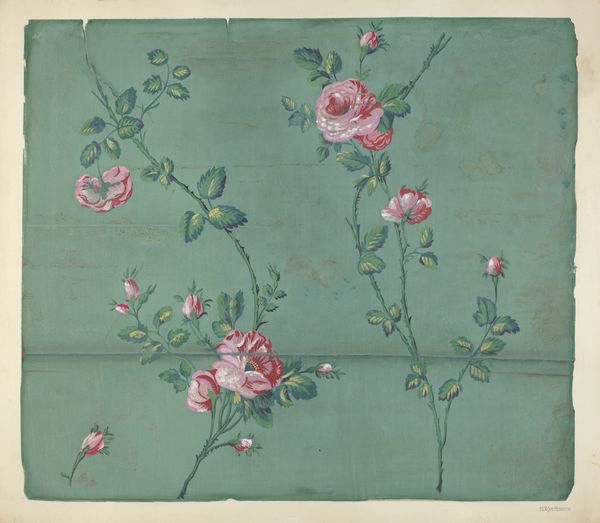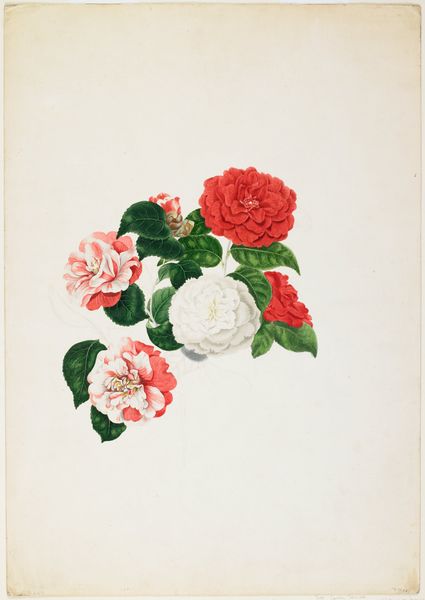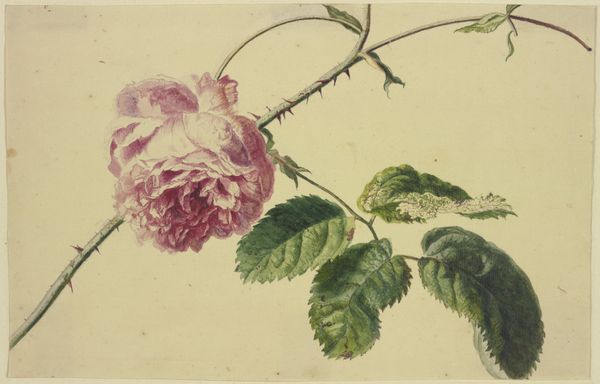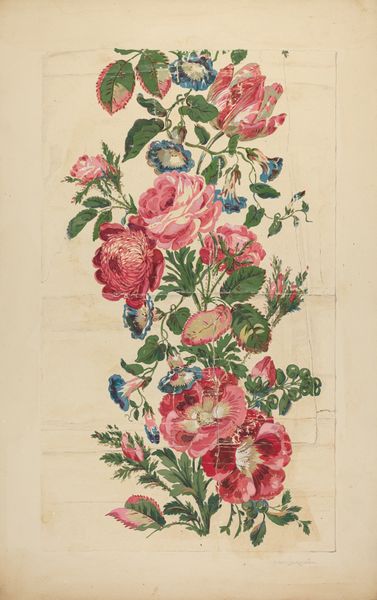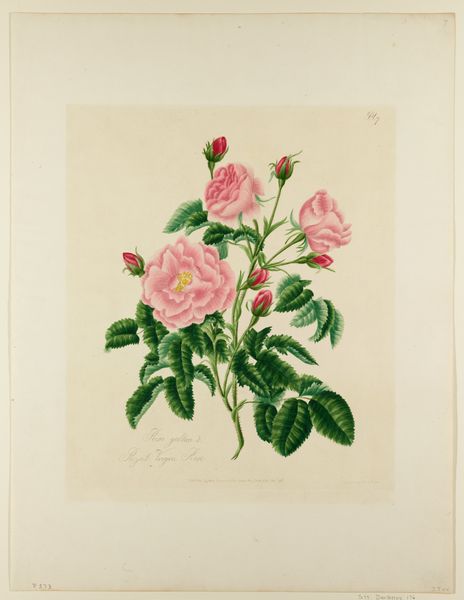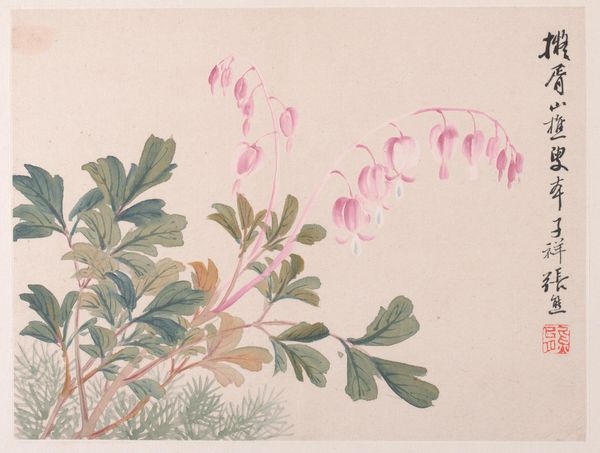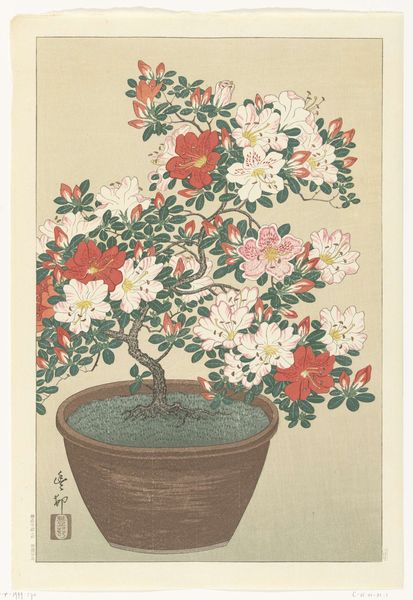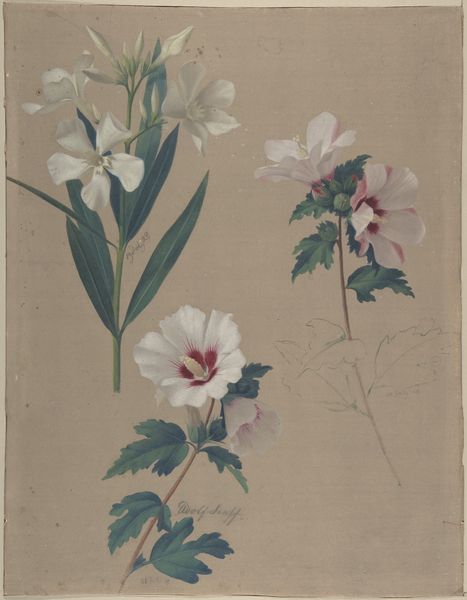
Dimensions: 10 11/16 x 11 5/16 in. (27.1 x 28.7 cm) (sheet)
Copyright: Public Domain
Editor: We're looking at "Peony," a woodblock print made around 1928 to 1930 by Yamamoto Chikuseki. I'm struck by the contrast between the delicate peony and the boldness of the blue butterfly. How do you interpret this work? Curator: I see this as an engagement with Ukiyo-e traditions but also a quiet subversion of them. The peony, a symbol of wealth and status, is rendered with a softness that belies its association with power. The presence of the butterfly introduces themes of transformation. Who gets to enjoy the privilege suggested by the peony, and whose labor made its existence possible? Editor: So you’re saying that the artist may be making a comment on social inequalities even while using traditionally beautiful imagery? Curator: Exactly. Consider the woodblock print as a medium. It allowed for the mass production of art, making it accessible to a wider audience. The choice to depict such a loaded symbol as the peony in this way raises questions about the democratization of art and luxury itself. How does it connect with ideas about labor and class? Editor: I hadn't thought about it that way. It makes me consider the artist's role in depicting such imagery, and for whom. Curator: And isn't that the critical role of art, to make us question what we accept as truth? What new understandings about the historical background and culture can you now recognize? Editor: That's definitely something I'll be thinking about regarding my own relationship to art from now on. Curator: And that deeper inquiry makes experiencing art all the richer!
